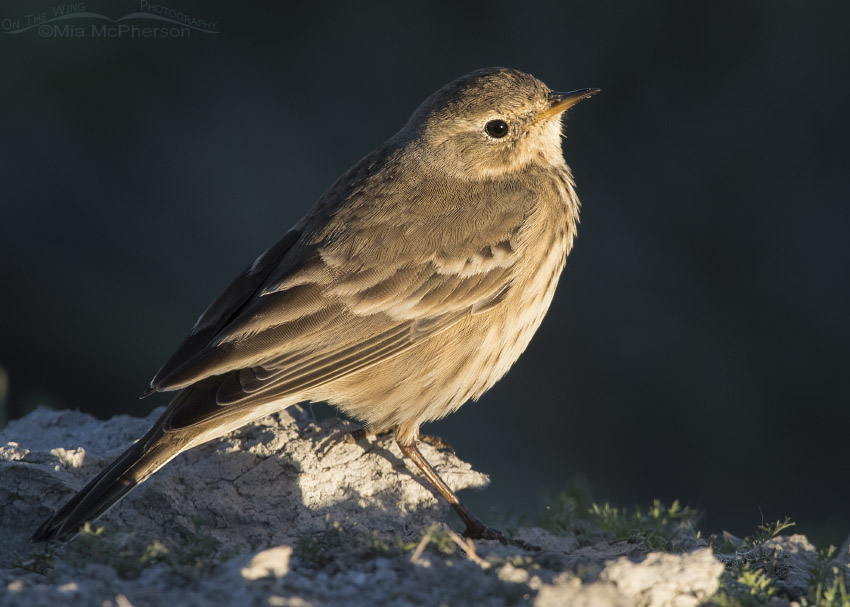 American Pipit at sunrise – Nikon D810, f9, 1/320, ISO 500, Nikkor 500mm VR with 1.4x TC, natural light
American Pipit at sunrise – Nikon D810, f9, 1/320, ISO 500, Nikkor 500mm VR with 1.4x TC, natural light
I’ve been thinking about the birds that will be leaving and those that will be arriving as summer leaves and fall makes its colorful and cooler appearance. One of the sounds I enjoy hearing in the fall isn’t as loud as the calls of Canada Geese but is instead a soft call that seems to be carried by the wind to my ears.
American Pipits will soon be migrating through the Salt Lake Valley and I will hear their flight calls along the causeway to Antelope Island and the fields at Farmington Bay WMA. Of course they are seen and heard in other locations in the Salt Lake Valley but that is where I see and hear them most often.
 American Pipit in mud – Nikon D810, f8, 1/1000, ISO 320, Nikkor 500mm VR with 1.4x TC, natural light
American Pipit in mud – Nikon D810, f8, 1/1000, ISO 320, Nikkor 500mm VR with 1.4x TC, natural light
American Pipits are also called Buff-bellied Pipits and they are a wide-ranging species found in North America, Europe and Central Asia. Recent studies indicate that the three North American subspecies are best regarded as distinct species. I wanted to clarify that before sharing this sound recording because it reads “Buff-bellied Pipit” for the title but it is the sound flight calls of American Pipits.
American Pipits are small songbirds that breed in arctic and alpine tundra including a few locations high in the mountains here in Utah. During migration it isn’t uncommon to see hundreds or even thousands of them in the fields along the marsh at Farmington Bay WMA or feeding along the shoreline of the Great Salt Lake.
I’ll be listening for their arrival.
Life is good.
Mia
Click here to see more of my American Pipit photos plus facts and information about this species.


I am always fascinated by how many of the small birds migrate. Incredible journeys.
Nice images. I’m not familiar with this bird, so I appreciate hearing how they sound.
I always learn something from your posts – thanks!
I agree with Bob. They are cute. Love contrast of lighted bird and darlk background. I could probably never manage that…takes anexpert’s eye, timing, gear and expertise…
Beautiful photos, Mia. They are cute little birds.